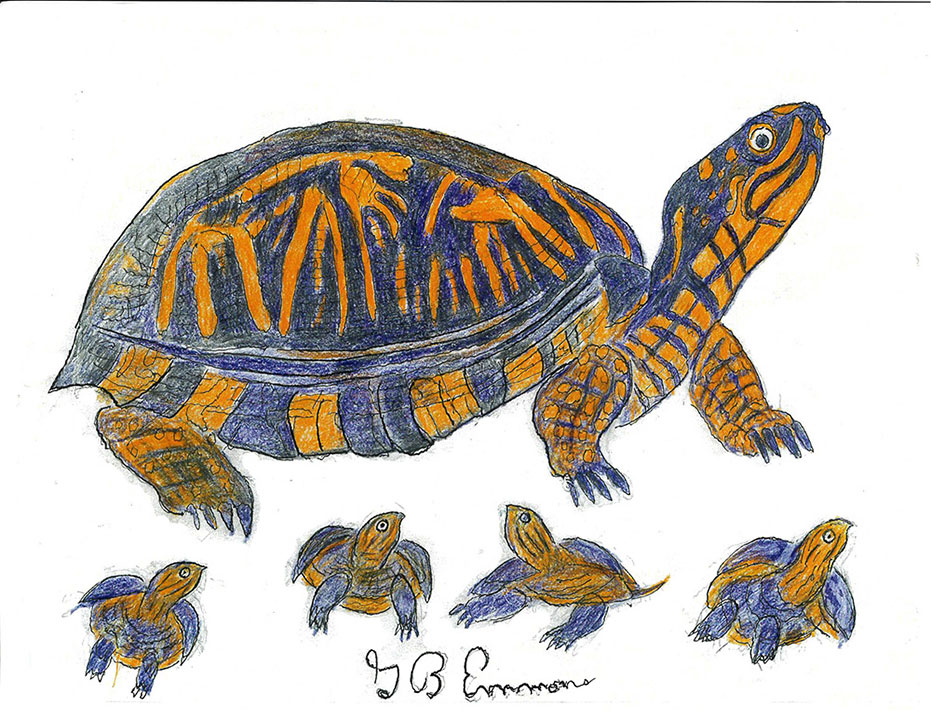The Wood Turtle is a very low-profile, crawling creature that spends most of its time near the waters of local rivers and streams. It also travels through forests and across grasslands but rarely winds up more than several hundred meters from flowing water. It prefers to use a shallow, sandy bottom to move from one pool to another.
Many different predators threaten its well-being, including snapping turtles, racoons, otters, foxes, cats, ravens and coyotes, each of which gobbles up a nutritious meal upon capturing a Wood Turtle. As in my illustration, these predators also pose a threat, destroying turtle nests and eating baby turtles, which adds greatly to the endangerment of the entire population.
The Wood Turtle itself is a totally omnivorous creature, feeding on a range of animals and plant matter, both in water and on land. It is attracted to a wide selection of insects, berries, beetles, Millipedes, slugs, fungi, mosses, grasses, and on occasion, it can be seen stomping the ground with alternating hits from both the left and right feet to cause moles and earthworms to rise to the surface where they become easy prey.
The Wood Turtle is somehow exposed to many other municipal dangers, such as being run over by speeding cars while crossing a country road or hit by agricultural machinery. They are more often subject to illegal poaching to add a pet turtle to a serpentine collection for a young member of a local country family.
To combat so many threats, Smithsonian scientists have been closely monitoring their dangerous movements since the year 2016 by attaching tracking devices that weigh less than 0.5 ounces. In the past year, no fewer than 38 turtles have been tracked in this way.
Wood Turtles have subsequently been petitioned for, including under the Endangered Species Act, to be reviewed by the end of the year to make a final and official determination. So far, the species is listed under the Greatest Conservation Need by the Northeast Association of Fish & Wildlife Agencies, Inc., which encompasses 13 U.S. states, the District of Columbia and six Canadian provinces.
The turtles in these places qualify for help with a head-starting process where they are temporarily removed from the dangerous wild world with all the threats with the hope that their condition improves greatly when they are released.
The most complete success of head-starting was in the past century when the American Buffalo was virtually brought back from extinction by head-starting it back into the wild. Let’s hope that the Wood Turtle is not getting near that far gone so that it might not be brought back in the immediate future for us all to recognize a complete recovery.
By George B. Emmons
